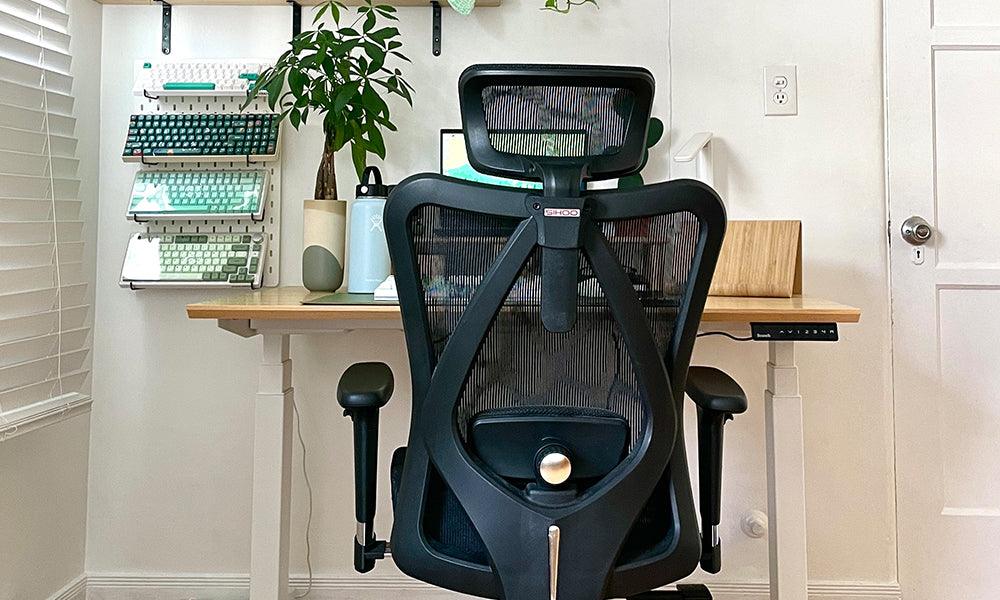The Ultimate Guide to Ideal Heights for Your Home Office Setup

SIHOOOffice |
The Significance of Ergonomics
Ergonomics is the science of designing and arranging items to optimize human well-being and overall system performance. In the context of a home office, proper ergonomics can prevent musculoskeletal disorders, reduce fatigue, and enhance productivity. The correct height of your office chair, desk, and monitor is integral to achieving ergonomic balance, providing support to your body, and minimizing the risk of discomfort or injury.
Office Chair Height
The office chair is the foundation of your workspace, and its height plays a crucial role in maintaining proper posture and comfort. Here's how you can determine the correct height for your office chair:
Seat Height:
Start by adjusting the chair height so that your feet are flat on the floor, with your knees forming a 90-degree angle.
Ensure that your thighs are parallel to the ground, promoting good blood circulation and reducing pressure on your lower back.
Armrest Height:
Adjust the armrests so that your arms rest comfortably, forming a 90-degree angle at the elbows.
The armrests should support your arms without causing strain, allowing you to work comfortably for extended periods.
Lumbar Support:
Check if your chair provides adequate lumbar support. This ensures that your lower back maintains its natural curve, reducing the risk of back pain.
Desk Height
The height of your desk is crucial for maintaining a comfortable working posture and preventing strain on your neck, shoulders, and back. Here's how to find the optimal desk height:
Elbow Height:
Adjust the desk height so that your elbows are at a 90-degree angle when resting on the desk.
This position promotes a natural and relaxed posture, preventing tension in the shoulders and neck.
Screen Distance:
Ensure that your desk is at a height that allows you to maintain a comfortable eye level with your monitor.
Your monitor should be at arm's length, and the top of the screen should be at or slightly below your eye level to reduce neck strain.
Monitor Height
Proper monitor height is essential for preventing eye strain, neck pain, and discomfort. Follow these guidelines to set up your monitor at the correct height:
Eye Level:
Position your monitor so that the top of the screen is at or slightly below your eye level.
This helps maintain a neutral neck position, reducing strain on your cervical spine.
Distance:
Keep your monitor at arm's length to avoid eye fatigue.
Adjust the distance based on your comfort, ensuring that text and images are clear without straining your eyes.
Tilt and Swivel:
Some monitors come with tilt and swivel features. Use these adjustments to fine-tune the monitor position for optimal viewing.
Practical Tips for Achieving Comfort
Take Breaks:
Regardless of your setup, taking regular breaks to stretch and move around is crucial for maintaining overall health and well-being.
Invest in Ergonomic Furniture:
Consider investing in ergonomic furniture designed to support a healthy and comfortable workspace.
Use Accessories:
If needed, use accessories such as monitor stands, footrests, or chair cushions to customize your setup further.
Conclusion
Creating an ergonomic home office involves careful consideration of the heights of your office chair, desk, and monitor. By following these guidelines and making necessary adjustments, you can achieve optimal comfort, prevent musculoskeletal issues, and enhance your overall productivity. Remember that everyone's body is unique, so take the time to personalize your workspace to suit your specific needs. A well-designed and ergonomically sound home office will not only boost your efficiency but also contribute to your long-term health and well-being.


































